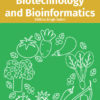Aquaculture is the art, science and business of cultivating aquatic animals and plants in fresh or marine waters. It is the extension of fishing, resulted from the fact that harvests of wild sources of fish and other aquatic species cannot keep up with the increased demand of a growing human population. The past 20 years have seen aquaculture evolve from a traditional practice to a science-based activity and grow into a significant food production sector, contributing more to national economies and providing better livelihoods for rural and farming families. It is very diverse and, contrary to many perceptions, dominated by shellfish and herbivorous and omnivorous pond fish either entirely or partly utilizing natural productivity. The rapid growth in the production of carnivorous species such as salmon, shrimp and catfish has been driven by globalizing trade and favorable economics of larger scale intensive farming. Sustainable development of aquaculture must take into account the societal value of ecosystem services for an efficient and environmentally sound production of food. Although some issues regarding the potential benefits and implementation of sustainable aquaculture remain, the consideration of food security and minimizing ecosystem impacts suggest that the time has come to take action.
This book ‘Aquaculture’ provides an understanding on a large variety of aquaculture related topics. It aims to describe past trends in capture fishery and aquaculture production, particularly concerning the development of marine capture fisheries, and to compare the current production with fisheries potential. The book presents recent research results on the interaction between aquaculture and environment, and includes several case studies all over the world with the aim of improving and performing sustainable aquaculture. An essential requirement for ensuring sustainable fisheries and aquaculture through good policies and management will be the provision of objective information on the state of fisheries and aquaculture. This book will be equally useful for students and professionals in aquaculture and biotechnology.













